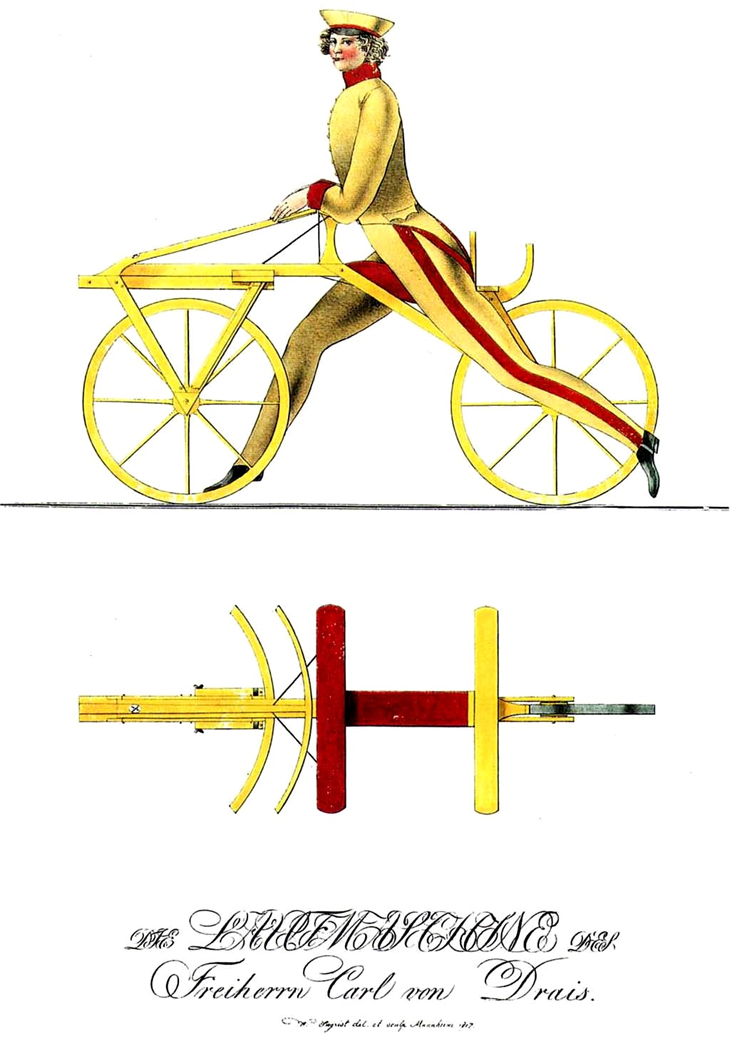When was the First Bicycle Invented?
After several models of simple bicycles and velocipedes, a true revolution in bicycle history happened during early 1860s. Two French carriage makers Pierre Michaux and Pierre Lallement improved design of then popular “daisy horse” and added mechanical crank drive with pedals on it. That moment is considered today as the most important moment in bicycle history.
Pierre Lallement was born on October 25, 1483 in Pont-à-Mousson, France. From his early life he worked with his father blacksmith and since 1862, he alone worked on building various types of small baby carriages. During that time in Nancy, France, he saw then popular Dandy Horse velocipede in use. He and his blacksmith partner Pierre Michaux begun formulating idea to include some kind of mechanical apparatus on it that would greatly improve the driving experience. Some historians are claiming that Pierre Michaux’s son Exnest was the first one who came to the idea of pedals. Their initial design was made from metal frame that enabled easy mass production and creation of several elegant designs. One of the major differences of that bicycle concerning todays was the larger front wheel that hosted the pedals and the wooden wheels. In those times transmission via chains and pneumatic tires were not yet invented, and in England public soon started calling this bikes “boneshakers”.
In 1864, Pierre Michaux collaborated with Olivier brothers (Aimé, René, and Marius) who were the first to offer monetary investment for mass production of bicycles. Between 1867 and 1869, Europe was in full blown “bicycle craze” and their business boomed especially in France and England. After severing their partnership Michaux in 1869, Olivier brother’s manufacturing came to a stop when demand for bicycles came to a sudden stop in USA and France (who by that time entered in Franco-Prussian war). Some historians claim that USA failed to become popular bicycle country because of poor road conditions and several patent disputes that halted any attempt of mass production. Popularity of “boneshaker” remained unchanged only in England. It was there that all future bicycle improvements happened.
“Boneshaker” continued to live during 1870s in the form of high-wheel bicycle called “penny-farthing”. One major difference between them was drastically bigger front wheel and very small rear wheel. That configuration enabled driver to drive much faster then before, but it introduced higher element of danger - braking during high speeds was much more harder, fall from bike created much larger injuries, and there was constant possibility of injury from much heavier bicycle frame. Risk of such injuries ensured that only small percentage of England’s population ever used such a device (usually younger adventurous males). Older population and women much more preferred configurations with three or four wheels. They provided much more stable ride and improved comfort.
The Englishman John Kemp Starley produced final variation of “boneshaker” in 1885. His “safety bicycle” created much-needed shift in public perception of bicycles. Exactly as in today’s bicycle, it included chain based drive that powered the rear wheel. During the same time John Dunlop created first pneumatic bike tire which further more increased success of Englishman John Kemp Starley’s bike, then called “Rover”. Bicycle innovation continued to the early 20th century when all major systems became standardized - basic diamond shape made from metal, pneumatic rubber tires, roller chain, one gear, coaster brakes.
